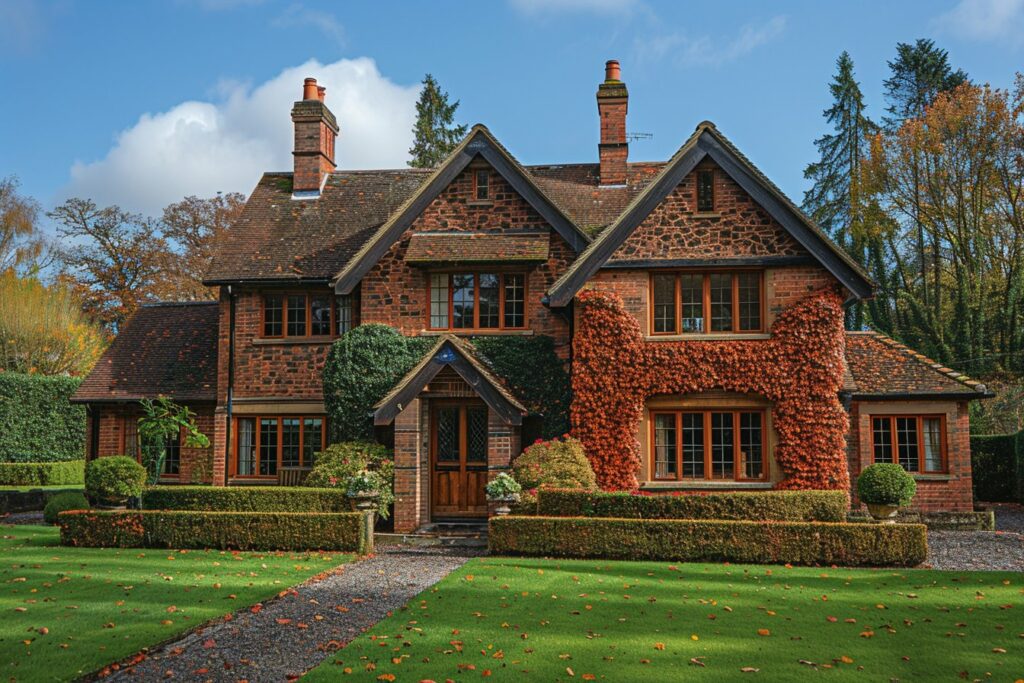England’s real estate market is diverse and dynamic, with house prices varying significantly from one region to another. Understanding the factors that influence these cost disparities is essential for property investors or prospective homebuyers hunting for their dream homes. In this comprehensive guide, we delve into the average house price in England and explore its key factors affecting it, such as location, type of properties, and square meter rates.
A Brief Overview of England’s Housing Market
Home to a population of approximately 56 million people, England occupies the largest landmass within the United Kingdom while hosting an eclectic mix of metropolitan cities, picturesque rural towns, and stunning coastal regions. As agriculture and industrial sectors continue to thrive, booming tech hubs and financial centers like London are witnessing staunch growth in real estate investments, particularly in housing and commercial properties.
This diversity in economic activities has a direct impact on the housing market, churning a wide range of property types, styles, sizes, and costs across the country. As demand for better dwelling options grows in urban areas, smaller towns and villages witness a surge in vacation homes and rental properties, catering to tourists seeking tranquil getaways.
Assessing the Average House Price
The average cost of residential properties in the UK fluctuates based on multiple variables. According to the most recent data provided by the Office for National Statistics (ONS), the average price for a dwelling in England amounts to around £268,000,
A closer analysis of specific regional metrics reveals notable disparities in house costs among various geographic subsectors:
- London: With a median property value of over £514,000, London remains the priciest district for buying homes. Thus, high demand and upscale living facilities attract people across the globe to reside in England’s capital.
- South East: The affluent South East region houses picturesque towns like Oxford, Reading, and Brighton, with average house prices rounding up to around £345,000 for this area.
- North West: Home to cities such as Manchester, Liverpool, and Chester, combining urban amenities with natural beauty, Northwest England offers median property prices of nearly £186,000.
Beyond regional influences, factors like proximity to transport, schools, and employment opportunities play a crucial role in determining housing costs. For instance, properties in desirable neighborhoods typically bear higher price tags than those situated farther from essential services or in less popular areas.
Breaking Down Property Types and their Average Prices
The cost disparities among different property types further amplify when examining England’s real estate market. Here are some standard categories accompanied by their corresponding approximate mean costs:
- Detached Houses: These standalone structures command an average price of roughly £396,000, with variations depending on whether the dwelling is new-built or pre-owned.
- Semi-Detached Houses: Offering a lower degree of privacy yet still delivering some separation from neighbors, these pairings fetch an average value of around £277,000 across England.
- Terraced Houses: Ideal for buyers seeking affordability while sacrificing significant levels of isolation, terraced homes (rows of similar-looking units) cost approximately £234,000 on average.
- Flats and Apartments: Compact sizes and shared facilities come into play when factoring the average price of flats or apartments, which typically hover around £230,000 in England.
New-Build vs. Pre-Owned Properties
Another facet to consider while appraising the average house price pertains to its construction status. New-build properties tend to sell at a premium compared to pre-owned homes as they offer modern facilities, economic energy use, and more effortless maintenance. As per the UK House Price index (HPI), new dwellings attract an average surcharge of almost 10% in comparison with existing residential property values. Therefore, keep your budgetary constraints and requirements firmly in mind when deciding between a newly built home or a pre-owned one.
Square Meter Rates: A Crucial Pricing Aspect
One essential indicator for evaluating housing prices is the cost per square meter. These rates provide valuable insight into comparing different regions’ relative real estate costs within England. In general, these numbers serve as indispensable references for accurate appraisals:
- London: The capital remains unrivaled in terms of square meter pricing, with prime zones commanding up to £20,000 or higher per sqm – making London one of the topmost costly cities globally.
- South East: Following London, square meter rates in this affluent region linger around £4,000 per sqm, depending on long-term factors such as future planned developments and economic prospects.
- North West: Presenting more economical alternatives to potential buyers, this district offers approximate per sqm fees that can dip below £2,500, strengthening its attractiveness for middle-income folks seeking sensibly-priced accommodations.
While review square meter rates furnish reliable indicators for general comparisons, remember that specifics like property types, architectural features, and materials utilized also leave indelible imprints upon house prices. Put simply, a top-grade luxury apartment will always fetch higher sums than an old, worn-out flat with subpar conveniences.
Final Thoughts
In conclusion, discussing the average house price in England encompasses multiple underlying aspects such as geographic diversity, property categories, construction standards, and local square meter charges. A holistic understanding of these variables ensures potential investors or homebuyers make informed decisions while scouting their ideal dwelling options or sizing up prospective returns on investment through rental incomes or capital appreciations.


